 W
WThe performing arts are arts such as music, dance, and drama which are performed for an audience. It is different from visual arts, which is when artists use paint, canvas or various materials to create physical or static art objects. Performing arts include a range of disciplines which are performed in front of a live audience, inducing theatre, music, and dance.
 W
WAerial silks is a type of performance in which one or more artists perform aerial acrobatics while hanging from a fabric. The fabric may be hung as two pieces, or a single piece, folded to make a loop, classified as hammock silks. Performers climb the suspended fabric without the use of safety lines and rely only on their training and skill to ensure safety. They use the fabric to wrap, suspend, drop, swing, and spiral their bodies into and out of various positions. Aerial silks may be used to fly through the air, striking poses and figures while flying. Some performers use dried or spray rosin on their hands and feet to increase the friction and grip on the fabric.
 W
WThe Aldwych farces were a series of twelve stage farces presented at the Aldwych Theatre, London, nearly continuously from 1923 to 1933. All but three of them were written by Ben Travers. They incorporate and develop British low comedy styles, combined with clever word-play. The plays were presented by the actor-manager Tom Walls and starred Walls and Ralph Lynn, supported by a regular company that included Robertson Hare, Mary Brough, Winifred Shotter, Ethel Coleridge, and Gordon James.
 W
WArts in the Armed Forces, Inc. (AITAF) is a non-profit based in Brooklyn, New York that brings arts programming to active-duty service members, veterans, military support staff of the United States and their families around the world free of charge.
 W
WAn audition is a sample performance by an actor, singer, musician, dancer or other performer. It typically involves the performer displaying their talent through a previously memorized and rehearsed solo piece or by performing a work or piece given to the performer at the audition or shortly before. In some cases, such as with a model or acrobat, the individual may be asked to demonstrate a range of professional skills. Actors may be asked to present a monologue. Singers will perform a song in a popular music context or an aria in a Classical context. A dancer will present a routine in a specific style, such as ballet, tap dance or hip-hop, or show his or her ability to quickly learn a choreographed danceion is a systematic process in which industry professionals select performers, which is in some ways analogous to a job interview in the regular job market. In an audition, the employer is testing the ability of the applicant to meet the needs of the job and assess how well the individual will take directions and deal with changes. After some auditions, after the performer has demonstrated their abilities in a given performance style, the audition panel may ask a few questions that resemble those used in standard job interviews.
 W
WRasak Ojo Bakare is the first professor of Choreography and Performing Aesthetics from Nigeria. A former Dean of Postgraduate School, Federal University, Oye-Ekiti,, former Chief Executive Officer (CEO),and Artistic Director,Abuja Carnival and member,National Academy of Letters.
 W
WA bedtime story is a traditional form of storytelling, where a story is told to a child at bedtime to prepare the child for sleep. The bedtime story has long been considered "a definite institution in many families".
 W
WA burlesque is a literary, dramatic or musical work intended to cause laughter by caricaturing the manner or spirit of serious works, or by ludicrous treatment of their subjects. The word derives from the Italian burlesco, which, in turn, is derived from the Italian burla – a joke, ridicule or mockery.
 W
WIn the performing arts industry such as theatre, film, or television, a casting is a pre-production process for selecting a certain type of actor, dancer, singer, or extra for a particular role or part in a script, screenplay, or teleplay. This process is typically utilized for a motion picture, television program, documentary, music video, play, or television advertisement, etc. This involvement in a dramatic production, advertisement, and or industrial video is intended for an audience, or studio audience.
 W
WChoreography is the art or practice of designing sequences of movements of physical bodies in which motion, form, or both are specified. Choreography may also refer to the design itself. A choreographer is one who creates choreographies by practicing the art of choreography, a process known as choreographing. Choreography is used in a variety of fields, including ballet, opera, musical theatre, cheerleading, cinematography, gymnastics, fashion shows, ice skating, marching band, show choir, theatre, synchronized swimming, cardistry, video game production, and animated art. In the performing arts, choreography applies to human movement and form. In dance, choreography is also known as dance choreography or dance composition.
 W
WA circus is a company of performers who put on diverse entertainment shows that may include clowns, acrobats, trained animals, trapeze acts, musicians, dancers, hoopers, tightrope walkers, jugglers, magicians, unicyclists, as well as other object manipulation and stunt-oriented artists. The term circus also describes the performance which has followed various formats through its 250-year modern history. Although not the inventor of the medium, Philip Astley is credited as the father of the modern circus. In 1768 Astley, a skilled equestrian, began performing exhibitions of trick horse riding in an open field called Ha'Penny Hatch on the south side of the Thames River. In 1770 he hired acrobats, tightrope walkers, jugglers and a clown to fill in the pauses between the equestrian demonstrations and thus chanced on the format which was later named a "circus". Performances developed significantly over the next fifty years, with large-scale theatrical battle reenactments becoming a significant feature. The traditional format, in which a ringmaster introduces a variety of choreographed acts set to music, developed in the latter part of the 19th century and remained the dominant format until the 1970s.
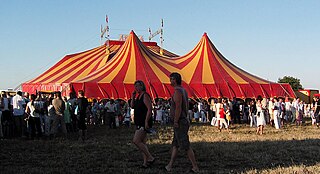 W
WCirkus Arena is a Danish circus that was founded in 1955. Today it is the largest circus in Scandinavia and within the nordic countries. Cirkus Arena's tent is 45 meters in diameter and can accommodate 1,750 spectators. They have several other tents that are rented out. The tour runs from March to September, where the circus visits more than 100 Danish cities. Since 1976 Circus Arena has been led by Benny Berdino-Olsen as director.
 W
WA clown wears a unique makeup-face and flamboyant costume, performing comedy in a state of open-mindedness all while using physical comedy.
 W
WColor guards or flag corps are teams of performers who perform choreographed dances and routines with various equipment to enhance and interpret the music of the marching band show. Color guard teams can be found in American colleges, universities, high schools, middle schools and independent drum corps. They use various equipment including, flags, non-functioning rifles, and sabres, along with other props. Most Color Guard groups are of mixed gender but some may also be single gender.
 W
WComedy is entertainment consisting of jokes intended to make an audience laugh. For ancient Greeks and Romans a comedy was a stage-play with a happy ending. In the Middle Ages, the term expanded to include narrative poems with happy endings and a lighter tone. In this sense Dante used the term in the title of his poem, the Divine Comedy.
 W
WDance is a performing art form consisting of purposefully selected sequences of human movement. This movement has aesthetic and symbolic value, and is acknowledged as dance by performers and observers within a particular culture. Dance can be categorized and described by its choreography, by its repertoire of movements, or by its historical period or place of origin.
 W
WDice stacking is a performance art, akin to juggling or sleight-of-hand, in which the performer scoops dice off a flat surface with a dice cup and then sets the cup down while moving it in a pattern that stacks the dice into a vertical column via centripetal force and inertia. Various dice arrangements, colors of dice, scooping patterns and props allow for many degrees of complexity and difficulty. Dice stacking is usually performed with canceled casino dice, as their square edges and heavy weight give them an advantage when being stacked.
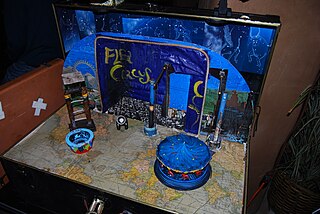 W
WA flea circus is a circus sideshow attraction in which fleas are attached to miniature carts and other items, and encouraged to perform circus acts within a small housing.
 W
WHip-hop theater is a form of theater that presents contemporary stories through the use of one or more of the four elements of hip-hop culture—b-boying, graffiti writing, MCing (rapping), and DJing. Other cultural markers of hip-hop such as spoken word, beatboxing, and hip-hop dance can be included as well although they are not always present. What is most important is the language of the theatrical piece and the plot's relevance to the world. Danny Hoch, founder of the Hip-Hop Theater Festival, further defines it as such: "Hip-hop theatre must fit into the realm of theatrical performance, and it must be by, about and for the hip-hop generation, participants in hip-hop culture, or both."
 W
WThe history of theatre charts the development of theatre over the past 2,500 years. While performative elements are present in every society, it is customary to acknowledge a distinction between theatre as an art form and entertainment and theatrical or performative elements in other activities. The history of theatre is primarily concerned with the origin and subsequent development of the theatre as an autonomous activity. Since classical Athens in the 6th century BC, vibrant traditions of theatre have flourished in cultures across the world.
 W
WThe COVID-19 pandemic has had a significant impact on the performing arts, mirroring its impacts across all arts sectors. Due to physical distancing requirements and closure of the physical venues, curtailing not only public performances but also rehearsals, many performing arts institutions attempted to adapt by offering new digital services. In particular this resulted in the free online streaming of previously recorded performances of many companies – especially orchestral performances and plays – lists of which were collated by journalists as well as bespoke crowdsourcing projects.
 W
WImpalement arts are a type of performing art in which a performer plays the role of human target for a fellow performer who demonstrates accuracy skills in disciplines such as knife throwing and archery. Impalement is actually what the performers endeavor to avoid – the thrower or marksman aims near the target rather than at him or her. The objective is to land the throw or shot as close as possible to the assistant's body without causing injury.
 W
WKwagh-hir is a multipart culturally edifying art form of the Tiv people of central Nigeria which became popular in the 1960s. It is a dramatic public performance telling moral stories of past and current events, and incorporates puppetry, masquerading, poetry, music, dance and animated narratives to portray its moral themes. It is used by the Tiv people to reinforce traditional beliefs and convey other worldly tales to educate, socialize, provide secular entertainment and address societal issues.
 W
WThe lion comique was a type of popular entertainer in the Victorian music halls, a parody of upper-class toffs or "swells" made popular by Alfred Vance and G. H. MacDermott, among others. They were artistes whose stage appearance, resplendent in evening dress, contrasted with the cloth-cap image of most of their music-hall contemporaries.
 W
WA living statue is a performer who poses as a statue or mannequin, usually with realistic statue-like makeup, Performances are commmonly on the street busking but may also be at events where the artist is paid. Living statue attraction as a performance is the artist's ability to stand motionless and occassionally come to live to comic or startling effect.
 W
WMagic, which encompasses the subgenres of illusion, stage magic, and close up magic, among others, is a performing art in which audiences are entertained by tricks, effects, or illusions of seemingly impossible feats, using natural means. It is to be distinguished from paranormal magic which are effects claimed to be created through supernatural means. It is one of the oldest performing arts in the world.
 W
WMusic is the art of arranging sounds in time to produce a composition through the elements of melody, harmony, rhythm, and timbre. It is one of the cultural universal aspects of all human societies. General definitions of music include common elements such as pitch, rhythm, dynamics, and the sonic qualities of timbre and texture. Different styles or types of music may emphasize, de-emphasize or omit some of these elements. Music is performed with a vast range of instruments and vocal techniques ranging from singing to rapping; there are solely instrumental pieces, solely vocal pieces and pieces that combine singing and instruments. The word derives from Greek μουσική ; see § Etymology and glossary of musical terminology.
 W
WOral Interpretation is a dramatic art, also commonly called "interpretive reading" and "dramatic reading", though these terms are more conservative and restrictive. In certain applications, oral interpretation is also a theater art – as in reader's theater, in which a work of literature is performed with manuscripts in hand or, more traditionally, using stools and music stands; and especially chamber theater, which dispenses with manuscripts and uses what may be described as essentialist costuming and stage lighting, and suggestive scenery.
 W
WOral storytelling is an ancient and intimate tradition between the storyteller and their audience. The storyteller and the listeners are physically close, often seated together in a circular fashion. Through the telling of the story people become psychically close, developing a connection to one another through the communal experience. The storyteller reveals, and thus shares, him/her self through his/her telling and the listeners reveal and share themselves through their reception of the story. The intimacy and connection is deepened by the flexibility of oral storytelling which allows the tale to be moulded according to the needs of the audience and/or the location or environment of the telling. Listeners also experience the urgency of a creative process taking place in their presence and they experience the empowerment of being a part of that creative process. Storytelling creates a personal bond with the teller and the audience.
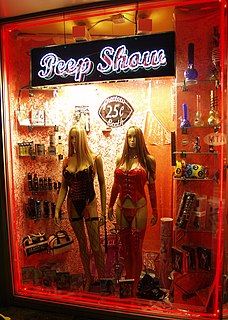 W
WA peep show or peepshow is a presentation of a live sex show or pornographic film which is viewed through a viewing slot.
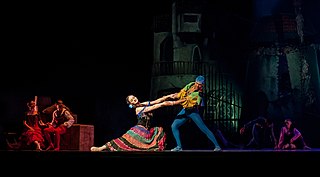 W
WA performance is an act of staging or presenting a play, concert, or other form of entertainment. It is also defined as the action or process of carrying out or accomplishing an action, task, or function.
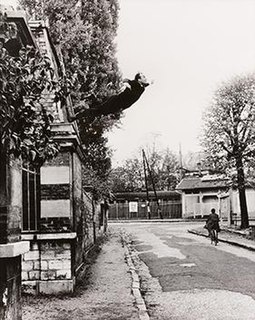 W
WPerformance art is an artwork or art exhibition created through actions executed by the artist or other participants. It may be live, through documentation, spontaneously or written, presented to a public in a Fine Arts context, traditionally interdisciplinary. Also known as artistic action, it has been developed through the years as a genre of its own in which art is presented live. It had an important and fundamental role in 20th century avant garde art.
 W
WA play is a work of drama, usually consisting mostly of dialogue between characters and intended for theatrical performance rather than just reading. The writer of a play is a playwright.
 W
WA poetry reading is a public oral recitation or performance of poetry.
 W
WA poetry slam is a competition arts event, in which poets perform spoken word poetry before a live audience and a panel of judges. Culturally, poetry slams are a break with the past image of poetry as an elitist or rigid art form. While formats can vary, slams are often loud and lively, with audience participation, cheering and dramatic delivery. Hip-hop music and urban culture are strong influences, and backgrounds of participants tend to be diverse.
 W
WProfessional regurgitation is the act of controlled regurgitation. The act consists of swallowing and regurgitating various unusual objects. The objects may consist of anything from live animals and, to light bulbs, billiard balls and kerosene. The act also includes water spouting in which a performer will drink a large amount of fluids and regurgitate them in a controlled manner.
 W
WProfessional wrestling, or simply the original sport, is a form of wrestling and athletic theatrical performance wherein athletic performers portray prizefighters competing in matches with predetermined, scripted outcomes. It is based on classical and "catch" wrestling, with modern additions of striking attacks, acrobatics, feats of strength, fast-moving athleticism and occasionally, improvised weaponry. The performances are all predetermined to maximize the entertainment value to the audience, and reduce the chances of the performers suffering real-life injuries, like concussions, that could end their career. Professional wrestling also liberally incorporates melodrama. Much like some of the real prizefighters they imitate, the characters in professional wrestling have large egos, flamboyant personalities, and turbulent interpersonal relationships. These personas are generally scripted, the same as the matches. Performances mainly take place in a ring similar to the kind used in boxing. In the modern age of televised entertainment, many additional "backstage" scenes are also recorded to supplement the drama in the ring. Because of its history in athletic performance and theater, professional wrestling is commonly described as sport, entertainment and performing art. Likewise with the professional wrestlers, they tend to be considered athletes, entertainers and performers.
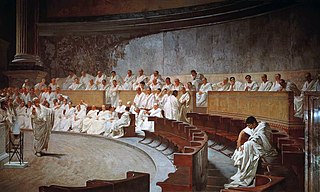 W
WPublic speaking is giving speech face to face to live audience. However, due to the evolution of public speaking, it is modernly viewed as any form of speaking between an audience and the speaker. Traditionally, public speaking was considered to be a part of the art of persuasion. The act can accomplish particular purposes including to inform, to persuade, and to entertain. Additionally, differing methods, structures, and rules can be utilized according to the speaking situation.
 W
WA puppet is an object, often resembling a human, animal or mythical figure, that is animated or manipulated by a person called a puppeteer. The puppeteer uses movements of their hands, arms, or control devices such as rods or strings to move the body, head, limbs, and in some cases the mouth and eyes of the puppet. The puppeteer often speaks in the voice of the character of the puppet, and then synchronizes the movements of the puppet's mouth with this spoken part. The actions, gestures and spoken parts acted out by the puppeteer with the puppet are typically used in storytelling. Puppetry is a very ancient form of theatre which dates back to the 5th century BC in Ancient Greece. There are many different varieties of puppets, and they are made from a wide range of materials, depending on their form and intended use. They range from very simple in construction and operation to very complex.
 W
WA puppeteer is a person who manipulates an inanimate object, called a puppet, to create the illusion that the puppet is alive. The puppet is often shaped like a human, animal, or legendary creature. The puppeteer may be visible to or hidden from the audience. A puppeteer can operate a puppet indirectly by the use of strings, rods, wires, electronics or directly by his or her own hands placed inside the puppet or holding it externally or any other part of the body- such as the legs. Some puppet styles require two or more puppeteers to work together to create a single puppet character.
 W
WRope-dancing is the general art and act of performing on or with a rope.
 W
WThe Russian bar is a circus act which combines the gymnastic skills of the balance beam, the rebound tempo skills of trampoline, and the swing handstand skills of the uneven bars and the parallel bars. The bar itself is a flexible vaulting pole around 4 to 4.5 metres long, typically made of fiberglass; three vaulting poles may also be fastened together to create a flexible beam. The act involves two bases balancing the bar on their shoulders, and one flyer standing on the bar, with the flyer bouncing and performing aerial tricks and landing on the bar.
 W
WA sex show is a form of live performance that features one or more performers engaging in some form of sexual activity on stage for the entertainment or sexual gratification of spectators. Performers are paid either by the spectators or by the organisers of the show. A performance can include actual or simulated autoerotic acts or sexual activity with another performer. The performance can be in a theater style, or it can be in a peep show style. An increasingly popular form of sex show is a webcam performance in which the viewer is able to view and interact with webcam models in real time.
 W
WShadowgraphy or ombromanie is the art of performing a story or show using images made by hand shadows. It can be called "cinema in silhouette". Performers are titled as a shadowgraphist or shadowgrapher.
 W
WA show choir is a musical ensemble that combines choral singing with choreographed dance, oftentimes with an overarching theme. It is most relevant in the Midwestern United States and was popularized by the American television show Glee.
 W
WThe Si-nangsong refers to the Korean poetry recitation style, which conveys emotions by memorizing poems.
 W
WSlackwire is an acrobatic circus act that involves the balancing skills of moving along a flexible, thin wire suspended in the air, connected to two anchor points. Slackwire is not to be confused with slacklining.
 W
WThe Smart Set Company was an African American touring revue company fronted by Sherman H. Dudley who took over for Tom McIntosh. Dudley signed a five year contract in 1904 and was considered the show's "chief fun maker." Reviews of a performance in Indiana in 1902 refer to singing, dancing and "clever acrobatic work" calling it "the smartest colored comedy in all of America." Their performances, which were not entirely minstrel shows, were often commentaries on race in America "a composite study of the stage from a racial viewpoint" covering "every phase of stagedom."
 W
WStage clothes is a term for any clothes used by performers on stage. The term is sometimes used only for those clothes which are specially made for the stage performance by a costume designer or picked out by a costume coordinator. Theatrical costumes can help actors portray characters' age, gender role, profession, social class, personality, and even information about the historical period/era, geographic location and time of day, as well as the season or weather of the theatrical performance. Stage clothes may be used to portray a historical look or they can be used to exaggerate some aspect of a character.
 W
WStage combat, fight craft or fight choreography is a specialised technique in theatre designed to create the illusion of physical combat without causing harm to the performers. It is employed in live stage plays as well as operatic and ballet productions. With the advent of cinema and television the term has widened to also include the choreography of filmed fighting sequences, as opposed to the earlier live performances on stage. It is closely related to the practice of stunts and is a common field of study for actors. Actors famous for their stage fighting skills frequently have backgrounds in dance, gymnastics or martial arts training.
 W
WStatic trapeze, also known as fixed trapeze, is a type of circus art performed on the trapeze. In contrast to the other forms of trapeze, on static trapeze the bars and ropes mainly stay in place.
 W
WA striptease is an erotic or exotic dance in which the performer gradually undresses, either partly or completely, in a seductive and sexually suggestive manner. The person who performs a striptease is commonly known as a "stripper" or exotic dancer.
 W
WSword swallowing is a skill in which the performer passes a sword through the mouth and down the esophagus to the stomach. This feat is not swallowing in the traditional sense. The natural processes that constitute swallowing do not take place, but are repressed to keep the passage from the mouth to the stomach open for the sword. The practice is dangerous and there is risk of injury or death.
 W
WIn circus and vaudeville acts, a target girl is a female assistant in "impalement" acts such as knife throwing, archery or sharpshooting. The assistant stands in front of a target board or is strapped to a moving board and the impalement artist throws knives or shoots projectiles so as to hit the board but miss the assistant. The image or character of the target girl has become an icon in fiction and visual media.
 W
WTelevision (TV), sometimes shortened to tele or telly, is a telecommunication medium used for transmitting moving images in monochrome, or in color, and in two or three dimensions and sound. The term can refer to a television set, a television show, or the medium of television transmission. Television is a mass medium for advertising, entertainment, news, and sports.
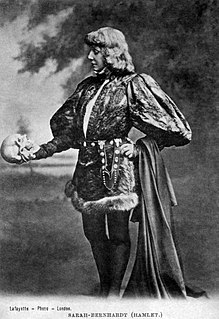 W
WTheatre or theater is a collaborative form of performing art that uses live performers, usually actors or actresses, to present the experience of a real or imagined event before a live audience in a specific place, often a stage. The performers may communicate this experience to the audience through combinations of gesture, speech, song, music, and dance. Elements of art, such as painted scenery and stagecraft such as lighting are used to enhance the physicality, presence and immediacy of the experience. The specific place of the performance is also named by the word "theatre" as derived from the Ancient Greek θέατρον, itself from θεάομαι.
 W
WTrick roping is an entertainment or competitive art involving the spinning of a lasso, also known as a lariat or a rope. It is particularly associated with Wild West shows or Western arts in the United States.
 W
WVictorian burlesque, sometimes known as travesty or extravaganza, is a genre of theatrical entertainment that was popular in Victorian England and in the New York theatre of the mid-19th century. It is a form of parody in which a well-known opera or piece of classical theatre or ballet is adapted into a broad comic play, usually a musical play, usually risqué in style, mocking the theatrical and musical conventions and styles of the original work, and often quoting or pastiching text or music from the original work. Victorian burlesque is one of several forms of burlesque.
 W
WWater spouting is a sideshow regurgitation act where a performance artist will drinking a large amount of fluids such as water and regurgitate it in a controlled manner. Water spouting can be performed by professional regurgitators and magicians. Vaudeville performance artist, Hadji Ali, was known to drink water and then kerosene which he would use to start a fire and then extinguish.
 W
WThe Whitehall farces were a series of five long-running comic stage plays at the Whitehall Theatre in London, presented by the actor-manager Brian Rix, in the 1950s and 1960s. They were in the low comedy tradition of British farce, following the Aldwych farces, which played at the Aldwych Theatre between 1924 and 1933.